5.йҮҢзЁӢиЎЁ
The odometer is present in most modern vehicles, used to track travel distance. It has been around since the ancient Greeks. It is not certain who the inventor is. Vitruvius first talks of an ancient odometer in his book, and some believe that the device had been invented previously by Archimedes.
йҮҢзЁӢиЎЁжҳҜзҺ°д»ЈдәӨйҖҡе·Ҙе…·з”ЁдәҺи®°еҪ•иЎҢиҝӣи·қзҰ»зҡ„дёҖдёӘд»ӘеҷЁгҖӮдҪҶе…¶е®һе®ғеңЁеҸӨеёҢи…Ҡе°ұе·Із»Ҹиў«еҸ‘жҳҺеҮәжқҘдәҶгҖӮдҪҶжҳҜеҸ‘жҳҺиҖ…жҳҜи°ҒеҚҙдёҚеҫ—иҖҢзҹҘгҖӮз»ҙзү№йІҒеЁҒеңЁд»–зҡ„д№ҰйҮҢ第дёҖж¬ЎжҸҗеҲ°дәҶйҮҢзЁӢиЎЁзҡ„еӯҳеңЁпјҢиҝҷи®©дәә们и®ӨдёәйҮҢзЁӢиЎЁжҳҜз”ұйҳҝеҹәзұіеҫ·еҸ‘жҳҺзҡ„гҖӮ
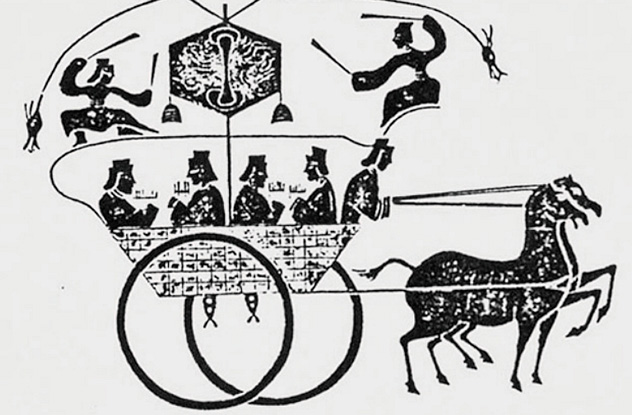
The concept of this early odometer was based around chariots having a standard wheel size. A wheel had to turn 400 times to complete a Roman mile. The axle's pin engaged a 400-tooth cogwheel, itself attached to another gear. When a full revolution completed, the gear released a stone into a box. At the end of the trip, counting the stones determined the distance traveled. We have no absolute evidence this device was built. However, during his travels, Alexander the Great had specialists called bematists who measured the distances of routes. Their measurements were later recorded by Pliny the Elder in his Natural History, and they are so accurate compared to modern measurements that a mechanical device was almost certainly employed. It wasn't long until another odometer was invented completely separately in ancient China. Created by prolific Chinese inventor Zhang Heng, the concept is similar, except that a drum was struck every half a kilometer.
еҸ‘жҳҺж—©жңҹйҮҢзЁӢиЎЁзҡ„еҺҹзҗҶжҳҜеҹәдәҺеҪ“ж—¶ж ҮеҮҶеӨ§е°Ҹзҡ„дәҢиҪ®иҪҰзҡ„иҪ®еӯҗгҖӮдёҖдёӘиҪ®еӯҗж»ҡеҠЁ400ж¬Ўе°ұзӯүдәҺжҲҳиҪҰиЎҢиҝӣдәҶдёҖдёӘRoman mileзҡ„и·қзҰ»гҖӮиҪҰиҪҙдёҠжңүдёҖдёӘ400йҪҝзҡ„йҪҝиҪ®пјҢиҝҷдёӘйҪҝиҪ®иҝһзқҖеҸҰдёҖдёӘдј еҠЁиЈ…зҪ®гҖӮеҪ“иҪҰиҪ®иҪ¬ж»Ў400ж¬ЎеҗҺпјҢиҝҷдёӘдј еҠЁиЈ…зҪ®е°ұдјҡжҺүдёҖдёӘзҹіеӨҙеҲ°дёҖдёӘе°Ҹзӣ’еӯҗйҮҢгҖӮеӣ иҖҢжҲҳиҪҰиЎҢиҝӣз»“жқҹеҗҺпјҢеҸӘиҰҒж•°ж•°зҹіеӨҙзҡ„дёӘж•°е°ұеҸҜд»Ҙз®—еҮәиЎҢиҝӣзҡ„и·қзҰ»гҖӮжҲ‘们没жңүзЎ®еҲҮзҡ„е®һйҷ…зҡ„иҜҒжҚ®иҜҒжҳҺиҝҷж ·зҡ„иЈ…зҪ®зЎ®е®һеӯҳеңЁиҝҮгҖӮдҪҶжҳҜеңЁдәҡеҺҶеұұеӨ§еӨ§еёқзҡ„дёҖж¬ЎиЎҢиҝӣиҝҮзЁӢдёӯпјҢд»–зү№еҲ«еҸ«дәҶи®ЎжӯҘеёҲжқҘи®Ўз®—д»–еҲ°еә•иө°дәҶеӨҡй•ҝи·қзҰ»гҖӮ他们жүҖи®°еҪ•зҡ„ж•°жҚ®иў«иҖҒжҷ®жһ—е°ји®°еҪ•еңЁдәҶд»–зҡ„дёҖжң¬еҗҚдёәиҮӘ然еҺҶеҸІзҡ„д№ҰйҮҢгҖӮ他们记еҪ•зҡ„ж•°жҚ®зҡ„зІҫзЎ®еәҰжҜ”иө·зҺ°еңЁжқҘйғҪжҜ«дёҚйҖҠиүІпјҢ他们е°ұеғҸжҳҜиў«йӣҮдҪЈзҡ„жңәжў°дёҖж ·гҖӮеңЁиҝҷд№ӢеҗҺдёҚд№…пјҢдёӯеӣҪзҡ„еӨ§еҸ‘жҳҺе®¶еј иЎЎдҫҝеҸ‘жҳҺеҮәдәҶеҸҰдёҖдёӘе®Ңе…ЁзӢ¬з«Ӣзҡ„йҮҢзЁӢиЎЁгҖӮеҺҹзҗҶдёҺеҸӨеёҢи…Ҡзҡ„йҮҢзЁӢиЎЁзӣёдјјпјҢдёҚеҗҢзҡ„жҳҜжҜҸиө°500зұіпјҢиЈ…зҪ®дёҠзҡ„е°Ҹйј“е°ұдјҡж•ІдёҖдёӢгҖӮ
4.й«ҳи·ҹйһӢ
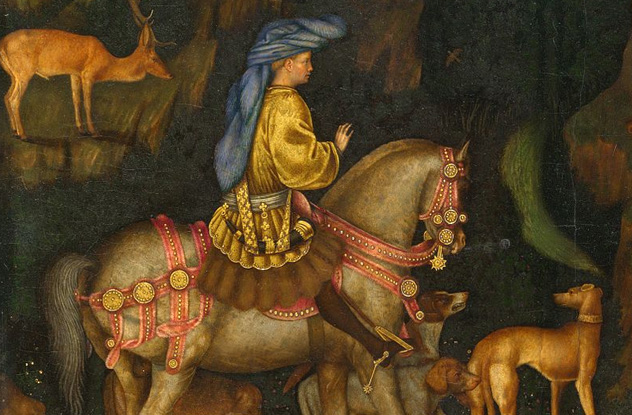
We consider high heels a modern accessory used exclusively by women to enhance their beauty and create the illusion of long, slender legs. However, as popular as they might be today, they are definitely not modern. High heels date all the way back to the ninth century, when they were worn by men.
жҲ‘们йҖҡеёёдјҡе°Ҷй«ҳи·ҹйһӢзңӢдҪңжҳҜдёҖз§ҚзҺ°д»ЈеҘіжҖ§дёәдәҶеҘҪзңӢе’Ңдҝ®йҘ°еҘ№д»¬йӮЈз»Ҷй•ҝиӢ—жқЎзҡ„и…ҝиҖҢз©ҝзҡ„иЎЈзү©й…Қ件гҖӮдҪҶжҳҜпјҢиҷҪ然й«ҳи·ҹйһӢеңЁзҺ°еңЁеҫҲеҸ—ж¬ўиҝҺпјҢдҪҶиҝҷеҚҙ并дёҚжҳҜзҺ°д»ЈзӨҫдјҡзҡ„дә§зү©гҖӮй«ҳи·ҹйһӢзҡ„еҺҶеҸІиҰҒиҝҪжәҜеҲ°9дё–зәӘпјҢ并且еңЁйӮЈдёӘж—¶еҖҷз”·жҖ§жүҚдјҡз©ҝй«ҳи·ҹйһӢгҖӮ
Ancient Persian ceramic bowls from over 1,000 years ago depict men wearing high-heeled shoes. Back then, the heels had a practical purpose rather than a cosmetic one. The men in question were archers, and the high heels allowed them to secure their feet in stirrups when shooting from horseback. The heels remained in use for centuries, allowing Persia to assemble the fiercest archers on the planet. Eventually, Persian culture spread to Europe. By the 17th century, high heels became all the rage over there as well. Again, men wore them, but this time, it was the aristocracy, not the soldiers. The shoes were status symbols. They were completely impracticalвҖ”the higher the heel, the better. An impractical (and often uncomfortable) wardrobe was constantly used by the European elite to signify privilege. The heels were also dyed red because red dye was an expensive luxury item.
и¶…иҝҮ1000е№ҙеҺҶеҸІзҡ„еҸӨжіўж–Ҝз“·зў—дёҠе°ұжңүжҸҸз»ҳз”·жҖ§з©ҝй«ҳи·ҹйһӢзҡ„з”»йқўгҖӮйӮЈдёӘж—¶еҖҷй«ҳи·ҹйһӢеҖҫеҗ‘дәҺе®һз”Ёдё»д№үиҖҢдёҚд»…д»…жҳҜиЈ…йҘ°е“ҒгҖӮйӮЈж—¶з©ҝй«ҳи·ҹйһӢзҡ„з”·жҖ§еҹәжң¬дёҠйғҪжҳҜеј“жүӢпјҢеӣ дёәиҝҷж ·еҸҜд»ҘдҝқиҜҒ他们еңЁе°„з®ӯж—¶иғҪе°ҶиҮӘе·ұзҡ„и„ҡеӣәе®ҡеңЁй©¬й•«дёҠд»ҺиҖҢдҝқжҢҒе№іиЎЎгҖӮй«ҳи·ҹйһӢиҝҷж ·зҡ„дҪҝз”Ёж–№жі•жҢҒз»ӯдәҶеҘҪеҮ дёӘдё–зәӘпјҢ并дҪҝеҫ—жіўж–ҜжӢҘжңүдәҶиҝҷдёӘжҳҹзҗғдёҠжңҖеҮ¶зҢӣзҡ„еј“жүӢгҖӮеҗҺжқҘпјҢжіўж–Ҝж–ҮеҢ–дј еҲ°дәҶ欧жҙІгҖӮеҲ°дәҶ17дё–зәӘпјҢй«ҳи·ҹйһӢејҖе§ӢйЈҺйқЎж¬§жҙІгҖӮеңЁиҝҷдёӘж—¶еҖҷз”·жҖ§еҗҢж ·д№ҹз©ҝй«ҳи·ҹйһӢпјҢдҪҶжҳҜиҝҷдәӣз”·жҖ§е№¶дёҚжҳҜеЈ«е…өпјҢиҖҢжҳҜиҙөж—ҸгҖӮиҮӘ然иҖҢ然ең°пјҢй«ҳи·ҹйһӢдҫҝжҲҗдёәдәҶең°дҪҚзҡ„иұЎеҫҒгҖӮйһӢи·ҹи¶Ҡй«ҳпјҢең°дҪҚе°ұи¶Ҡй«ҳгҖӮеӣ иҖҢй«ҳи·ҹйһӢе®Ңе…ЁеӨұеҺ»дәҶе®ғзҡ„е®һз”Ёд»·еҖјпјҡеӣ дёә欧жҙІзҡ„зІҫиӢұ们жҖ»жҳҜе–ңж¬ўз©ҝзқҖдёҖиә«дёҚе®һз”Ёзҡ„пјҲеҗҢж ·д№ҹдёҚиҲ’жңҚзҡ„пјүиЎҢеӨҙжқҘеҪ°жҳҫ他们зҡ„зү№жқғгҖӮй«ҳи·ҹйһӢзҡ„йһӢи·ҹд№ҹиў«жҹ“жҲҗдәҶзәўиүІпјҢжҳҜеӣ дёәеңЁйӮЈдёӘж—¶еҖҷзәўиүІжҹ“ж–ҷжҳҜжңҖиҙөжңҖеҘўдҫҲзҡ„жҹ“ж–ҷгҖӮ
3.ең°йңҮд»Ә
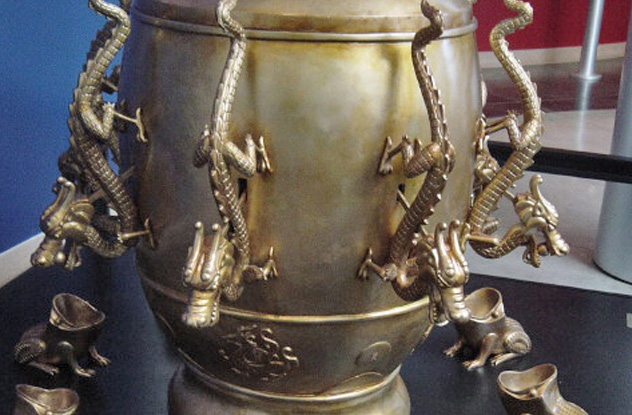
An earthquake can be incredibly devastating. Even though we can't stop it, an instrument to warn us of seismic motions could prove to be invaluable. Nowadays, we have access to such instruments, and so did the ancient Chinese. The famed Chinese polymath Zhang Heng has the world's first seismograph to add to his impressive list of achievements.The invention known as Houfeng Didong Yi ("instrument for inquiring into the wind and the shaking of the earth") was created in A.D. 132. It was later described in the History of the Later Han Dynasty as a giant bronze vessel. It had eight contact points in the form of bronze dragons with balls in their mouths on the outside of the vessel and a bronze column inside. When an earthquake approached, the column shifted in a particular direction, and a lever made that dragon drop the ball, thus revealing the quake's direction.
жҜҸдёҖеңәең°йңҮйғҪе……ж»ЎдәҶйҡҫд»ҘзҪ®дҝЎзҡ„жҜҒзҒӯжҖ§гҖӮе°Ҫз®ЎжҲ‘们дёҚиғҪйҳ»жӯўең°йңҮзҡ„еҸ‘з”ҹпјҢдҪҶжҳҜдёҖз§ҚиғҪеӨҹжҸҗеүҚиӯҰе‘ҠжҲ‘们ең°йңҮе°ҶиҰҒжқҘдёҙзҡ„д»ӘеҷЁжҳҜе…·жңүеҫҲеӨ§д»·еҖјзҡ„дёңиҘҝгҖӮзҺ°еңЁпјҢжҲ‘们已з»ҸиғҪеӨҹеҒҡеҮәиҝҷж ·зҡ„дёңиҘҝгҖӮдҪҶжҳҜеңЁеҸӨд»Јзҡ„дёӯеӣҪпјҢ他们早已еҒҡеҮәдәҶиҝҷж ·зҡ„дёңиҘҝгҖӮз”ұеҚҡеӯҰи‘—з§°зҡ„дёӯеӣҪеҸ‘жҳҺе®¶еј иЎЎеҸ‘жҳҺдәҶдё–з•ҢдёҠ第дёҖеҸ°ең°йңҮд»ӘпјҢиҝҷеҸ°ең°йңҮд»Әд№ҹжҳҜд»–жңҖдјҹеӨ§зҡ„жҲҗе°ұд№ӢдёҖгҖӮиҝҷеҸ°еҸ‘жҳҺдәҺе…¬е…ғ132е№ҙзҡ„д»ӘеҷЁзҡ„еҗҚеӯ—еҸ«еҒҡ"еҖҷйЈҺең°еҠЁд»Ә"гҖӮе®ғеңЁдёҖжң¬еҸ«еҒҡгҖҠеҗҺжұүж—¶жңҹзҡ„еҺҶеҸІгҖӢзҡ„д№ҰйҮҢиў«жҸҸиҝ°дёәдёҖдёӘе·ЁеӨ§зҡ„йқ’й“ңеҷЁгҖӮе®ғз”ұдёӯй—ҙзҡ„й“ңжҹұе’Ңд»–е‘Ёеӣҙзҡ„е…«жқЎеҸЈеҗ«й“ңзҗғзҡ„йқ’й“ңйҫҷз»„жҲҗгҖӮеҰӮжһңеҸ‘з”ҹең°йңҮпјҢй“ңжҹұеӣ дёәеҸ—еҲ°йңҮеҠЁеӨұеҺ»е№іиЎЎпјҢиҝҷж ·е°ұдјҡи§ҰеҠЁеҲ°е…«жқЎйҫҷдёӯзҡ„дёҖжқЎпјҢдҪҝзӣёеә”зҡ„йҫҷеҳҙдёӯзҡ„й“ңзҗғжҺүе…ҘдёӢж–№иҹҫиңҚзҡ„еҸЈдёӯпјҢиҝҷж ·дҫҝиғҪеҲӨж–ӯеҮәең°йңҮеҸ‘з”ҹзҡ„ж—¶й—ҙдёҺж–№еҗ‘гҖӮ
2.иҪ®ејҸжәңеҶ°йһӢ
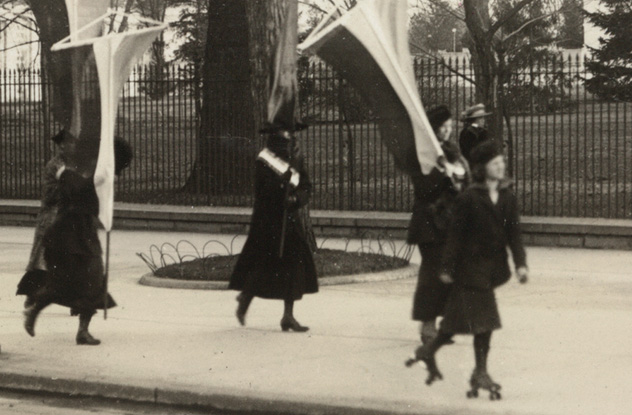
We might associate the rise of the roller skates with the popularity of the roller discos of the '60s and '70s, but these inventions are far older. The first record of something we would call a pair of roller skates dates back to the 18th century. A Belgian inventor, John Joseph Merlin, created inline skates in the 1760s. They were ice skates with wheels instead of blades. He wanted to show off his new creations in style, and he wore them at a masquerade ball in the city of Huys, Belgium. However, the story goes that he couldn't stop and crashed full-speed into a giant mirror.
жҲ‘们еҸҜиғҪе°ҶиҪ®ејҸжәңеҶ°йһӢзҡ„еҸ‘еұ•дёҺе…ӯдёғеҚҒе№ҙд»Јзҡ„иҪ®ж»‘иҝӘж–Ҝ科иҒ”зі»еҲ°дёҖиө·пјҢдҪҶжҳҜиҝҷйЎ№еҸ‘жҳҺзҡ„еҮәзҺ°иҰҒжӣҙж—©дёҖдәӣгҖӮжңҖж—©зҡ„жҲ‘们еҸҜд»Ҙз§°д№ӢдёәдёҖеҸҢиҪ®ејҸжәңеҶ°йһӢзҡ„и®°еҪ•еҸҜд»ҘиҝҪжәҜеҲ°18дё–зәӘгҖӮдёҖдёӘжҜ”еҲ©ж—¶зҡ„еҸ‘жҳҺ家пјҢзәҰзҝ°В·д№”з‘ҹеӨ«В·й©¬жһ—пјҢ еңЁ17дё–зәӘ60е№ҙд»ЈеҸ‘жҳҺдәҶзӣҙжҺ’иҪ®жәңеҶ°йһӢгҖӮйЎҫеҗҚжҖқд№үпјҢзӣҙжҺ’иҪ®е°ұжҳҜе°ҶиҖҒејҸжәңеҶ°йһӢзҡ„еҶ°еҲҖжҚўжҲҗдәҶдёҖжҺ’иҪ®еӯҗгҖӮдёәдәҶзӮ«иҖҖд»–ж—¶е°ҡзҡ„ж–°еҸ‘жҳҺпјҢ马жһ—з©ҝзқҖд»–зҡ„зӣҙжҺ’иҪ®еҺ»еҸӮеҠ дәҶеңЁжҜ”еҲ©ж—¶huysдёҫиЎҢзҡ„еҢ–еҰҶиҲһдјҡгҖӮ然иҖҢж•…дәӢзҡ„з»“еұҖ并жңӘжңқд»–жүҖжғіиұЎзҡ„ж–№еҗ‘еҸ‘еұ•пјҡд»–ж»‘еҫ—еӨӘеҝ«д»ҘиҮҙдәҺж №жң¬еҒңдёҚдёӢжқҘпјҢжңҖеҗҺзӣҙзӣҙең°ж’һеҲ°дәҶдёҖйқўеӨ§й•ңеӯҗдёҠгҖӮ
The first inventor to patent a roller skate design was Frenchman M. Petitbled. His creation looked more like wooden sandals with three wheels attached to the sole. Like Merlin's invention, the problem with the Petitbled skate was that it was incredibly difficult to turn, stop, or do practically anything other than go forward.It wasn't until James Leonard Plimpton invented the precursor to modern roller skates in 1863 that the concept really took off. His design with two pairs of wheels was the first of its kind and was a lot safer and easier to use. Plimpton then turned the office of his furniture business into a skating floor and later founded the New York Roller Skating Association to promote the sport.
иҪ®ејҸжәңеҶ°йһӢи®ҫи®Ўзҡ„дё“еҲ©жңҖз»ҲеұһдәҺжі•еӣҪдәәдҪ©еёғйӣ·еҫ·пјҢд»–зҡ„и®ҫи®ЎзңӢиө·жқҘжӣҙеғҸдёҖеқ—жңЁзүҮе’ҢдёүдёӘиҪ®еӯҗзӣҙжҺҘзІҳеңЁйһӢеё®дёҠгҖӮе’Ң马жһ—зҡ„еҸ‘жҳҺдёҖж ·пјҢдҪ©еёғйӣ·еҫ·зҡ„жәңеҶ°йһӢеҫҲйҡҫеҒҡеҲ°иҪ¬ејҜгҖҒеҒңжӯўе’ҢйҷӨејҖеүҚиҝӣд»ҘеӨ–зҡ„е…¶д»–еҠЁдҪңгҖӮдёҖзӣҙеҲ°дҪңдёәе…Ҳй”Ӣзҡ„и©№е§ҶеЈ«В·иҺұжҳӮзәіеӨҡВ·жҷ®жһ—жҷ®йЎҝејҖиҫҹдәҶйҖҡеҫҖзҺ°д»ЈиҪ®ејҸжәңеҶ°йһӢзҡ„йҒ“и·Ҝд№ӢеҗҺпјҢиҪ®ејҸжәңеҶ°йһӢжүҚеҸ—еҲ°е…¬дј—зҡ„е…іжіЁгҖӮд»–зҡ„и®ҫи®ЎжңүдёӨеҜ№ж»‘иҪ®е№¶дё”жӣҙеҠ е®үе…Ёе’Ңе®№жҳ“дҪҝз”ЁгҖӮжҷ®жһ—жҷ®йЎҝеңЁд№ӢеҗҺе°Ҷд»–еҒҡ家具з”ҹж„Ҹзҡ„еҠһе…¬е®Өж”№иЈ…жҲҗдәҶдёҖдёӘе°ҸеһӢжәңеҶ°еңәпјҢ并且еңЁд№ӢеҗҺеҲӣз«ӢдәҶзәҪзәҰиҪ®ж»‘иҒ”зӣҹжқҘжҺЁе№ҝиҝҷйЎ№иҝҗеҠЁгҖӮ
1.еҸЈйҰҷзі–
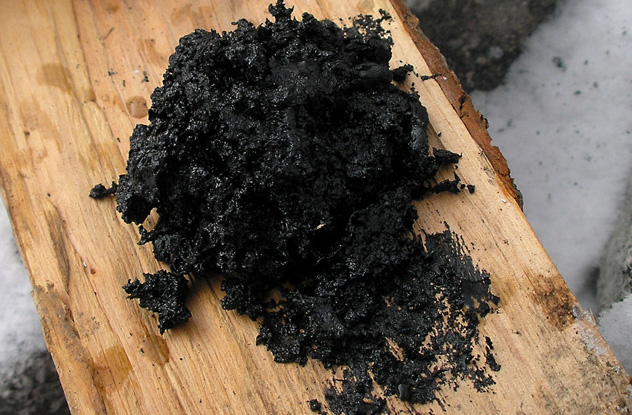
In one form or another, chewing gum has existed for a really long timeвҖ”somewhere around 5,000 years, in fact. The oldest known chewing gum was discovered on a dig in Finland, and it dates back to the Neolithic age. It was a lump made out of birch bark tar, but it had clear tooth imprints in it. Even back then, chewing gum had a medical benefit. The birch bark contained phenols with antiseptic properties, so the chewing gum was likely used to treat gum infections.
дәӢе®һдёҠпјҢеҸЈйҰҷзі–еңЁжҹҗз§ҚзЁӢеәҰдёҠе·Із»ҸжңүеӨ§зәҰ5000е№ҙзҡ„еҺҶеҸІдәҶгҖӮжңҖиҖҒзҡ„еҸЈйҰҷзі–жҳҜеңЁиҠ¬е…°иҝӣиЎҢжҢ–жҺҳе·ҘдҪңж—¶иў«еҸ‘зҺ°зҡ„пјҢе®ғзҡ„е№ҙйҫ„еҸҜд»ҘиҝҪжәҜеҲ°ж–°зҹіеҷЁж—¶д»ЈгҖӮйӮЈжҳҜдёҖеқ—з”ұжЎҰж ‘и„ӮеҒҡжҲҗзҡ„дёңиҘҝпјҢдёҠйқўиҝҳжңүжё…жҷ°зҡ„зүҷеҚ°гҖӮеҚідҫҝжҳҜеңЁиҝңеҸӨж—¶д»ЈпјҢеҸЈйҰҷзі–д№ҹжңүеҢ»з–—дҪңз”ЁгҖӮжЎҰж ‘зҡ®еҗ«жңүе…·жңүйҳІи…җдҪңз”Ёзҡ„й…ҡзұ»еҢ–еҗҲзү©пјҢеӣ иҖҢиҝҷеқ—еҸЈйҰҷзі–иў«и®ӨдёәжҳҜз”ЁжқҘжІ»з–—еҸЈи…”з—…е®ізҡ„зҡ„дёңиҘҝгҖӮ
Over the centuries, many other ancient cultures enjoyed their own types of gum. The Greeks made theirs from the resin of the mastic tree. Native Americans chewed resin from spruce trees. However, it is the Aztecs who helped launch the modern chewing gum craze. They once chewed chicle, a natural gum derived from several species of South American trees. In the 1860s, Mexican general Antonio Lopez de Santa Anna brought chicle to America to inventor Thomas Adams, wanting to use it to manufacture rubber for tires. This failed, but Adams then thought of using chicle as the main ingredient for his Adams New York Chewing Gum. It was a big success, and two years later, Adams was mass-producing it. Chicle remained the core ingredient of gum for 100 years until it was replaced with synthetic rubbers that were cheaper to manufacture.
еҘҪеҮ дёӘдё–зәӘд»ҘжқҘпјҢдёҚеҗҢзҡ„ж–ҮеҢ–жңүзқҖдёҚеҗҢзұ»еһӢзҡ„зҡ„еҸЈйҰҷзі–пјҢдҪҶ他们йғҪеҫҲдә«еҸ—гҖӮеёҢи…Ҡдәәзҡ„еҸЈйҰҷзі–жҳҜз”ұд№ійҰҷж ‘зҡ„ж ‘и„ӮеҒҡжҲҗзҡ„пјҢзҫҺжҙІеҺҹдҪҸж°‘еҲҷдҪҝз”Ёдә‘жқүзҡ„ж ‘и„ӮгҖӮиҖҢзҺ°д»Јзҡ„еҸЈйҰҷзі–и®©дәәеҰӮжӯӨзӢӮзғӯзҡ„еҺҹеӣ еҚҙжҳҜеӣ дёәйҳҝе…№зү№е…Ӣдәәзҡ„зјҳж•…гҖӮ他们жңҖејҖе§Ӣзҡ„еҸЈйҰҷзі–жҳҜдә§иҮӘеҚ—зҫҺзҡ„дёҖз§Қж ‘зҡ„еӨ©з„¶ж ‘и„ӮгҖӮ18дё–зәӘ60е№ҙд»ЈпјҢеўЁиҘҝе“Ҙе°ҶеҶӣе®үдёңе°јеҘҘВ·еҫ·В·жЎ‘еЎ”В·е®үзәіе°Ҷиҝҷз§Қж ‘и„ӮеёҰеӣһз»ҷдәҶзҫҺеӣҪеҸ‘жҳҺ家жүҳ马ж–ҜВ·дәҡеҪ“пјҢ他们еҮҶеӨҮз”ЁиҝҷдёӘж ‘и„ӮжқҘеҲ¶дҪңиҪ®иғҺз”Ёзҡ„ж©Ўиғ¶гҖӮдҪҶжҳҜеӨұиҙҘдәҶгҖӮдәҡеҪ“еҗҺжқҘеҸҲиҜ•зқҖе°Ҷиҝҷз§Қж©Ўиғ¶дҪңдёәд»–зҡ„дәҡеҪ“зәҪзәҰеҸЈйҰҷзі–зҡ„дё»иҰҒеҺҹж–ҷгҖӮд»ӨдәәжІЎжғіеҲ°зҡ„жҳҜпјҢиҝҷж¬Ўе°қиҜ•еҚҙиҺ·еҫ—дәҶе·ЁеӨ§зҡ„жҲҗеҠҹпјҢ并且еңЁдёӨе№ҙд»ҘеҗҺпјҢдәҡеҪ“ејҖе§ӢеӨ§йҮҸз”ҹдә§иҝҷз§ҚеҸЈйҰҷзі–гҖӮиҝҷз§Қж©Ўиғ¶еңЁдёҖзҷҫе№ҙд»ҘжқҘдёҖзӣҙдҪңдёәеҸЈйҰҷзі–зҡ„дё»иҰҒеҺҹж–ҷпјҢдёҖзӣҙеҲ°е®ғиў«дәәйҖ ж©Ўиғ¶жүҖд»ЈжӣҝпјҡдҪңдёәеҺҹж–ҷиҖҢиЁҖдәәйҖ ж©Ўиғ¶иҰҒдҫҝе®ңеҫ—еӨҡгҖӮ
зҝ»иҜ‘пјҡиөөйӣЁжҷҙ жқҘжәҗпјҡеүҚеҚҒзҪ‘

















